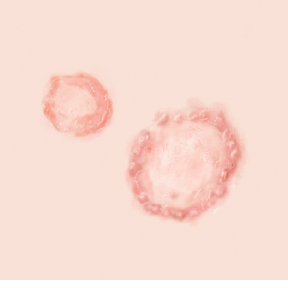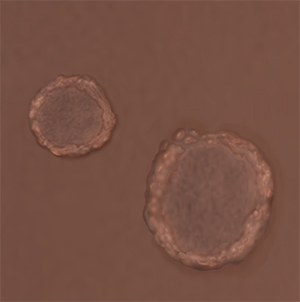When Your Child Has Ringworm
Ringworm is a fungal infection that affects the skin. It spreads from person-to-person. Ringworm appears as a round or oval patch. It is smooth in the center with a scaly, red border. The most commonly affected areas are the scalp, feet, nails, and groin. It's called ringworm because of the way it looks. It's not caused by a worm. Ringworm is not serious and can usually be treated at home.
 |
| Ringworm infection on light skin. |
 |
| Ringworm infection on dark skin. |
What causes ringworm?
Ringworm is caused by certain kinds of fungus. These are normally found in the soil and on the skin of humans and animals.
How is ringworm spread?
Ringworm can be spread in the following ways:
-
Touching the rash on an infected person, such as during play or contact sports like wrestling.
-
Sharing an item that has been used by an infected person, such as a comb, towel, or hat.
-
Contact with an infected animal. If you have pets, check them for ringworm. Dogs or cats may have scaly, itchy, and hairless areas that should be treated right away.
-
Walking barefoot on shared surfaces, such as locker rooms and public showers.
What are the symptoms of ringworm?
Symptoms vary depending on the area of the infection, but can include:
-
On lighter skin, round pink or red patches with a scaly, red border that looks like a red ring.
-
On darker skin, the patches are often brown or gray.
-
Itching in the affected areas.
-
Bald patches with scalp infections
-
Discolored nails with nail infections
How is ringworm diagnosed?
Ringworm is diagnosed by how it looks. The health care provider will ask about your child’s symptoms and health history. Your child will also be examined. You will be told if any tests are needed. Your provider may also do a painless skin scraping to look at under the microscope or send to the lab for further testing.
How is ringworm treated?
Ringworm on the body generally goes away within 4 or 6 weeks of treatment.
You can treat your child’s ringworm by:
-
Applying over-the-counter topical antifungal cream to the affected areas as directed by the provider. Before and after you apply the cream, wash your hands with warm water and soap.
-
Washing your child’s hair and body with antifungal shampoo and body wash.
-
Using medicines. Ringworm on the scalp or nails must be treated with oral medicine prescribed by the provider. Make sure that your child takes all of the medicine, even if symptoms improve. Creams, lotions, and powders don’t work for ringworm on the scalp.
-
Keeping the infected area clean and dry.
When to call your health care provider
Call your provider if your child has:
-
Symptoms that don't get better within 6 to 8 weeks of starting treatment.
-
Signs of infection, such as pus, swelling, or fluid leaking in the affected areas.
How can you prevent the spread of ringworm?
Follow these steps to keep your child from passing ringworm to others:
-
Have your child wash their hands often with soap and clean, running water. This is especially important after touching the affected areas.
-
Don't let your child share personal items, such as hats, combs, towels, or clothing.
-
If your child has ringworm, keep the area covered with a bandage so that they don't pass the infection to others.
-
Don't have contact with infected pets.
Online Medical Reviewer:
Chelsey Schilling BSN RN
Online Medical Reviewer:
Tara Novick BSN MSN
Online Medical Reviewer:
Vinita Wadhawan Researcher
Date Last Reviewed:
10/1/2024
© 2000-2025 The StayWell Company, LLC. All rights reserved. This information is not intended as a substitute for professional medical care. Always follow your healthcare professional's instructions.